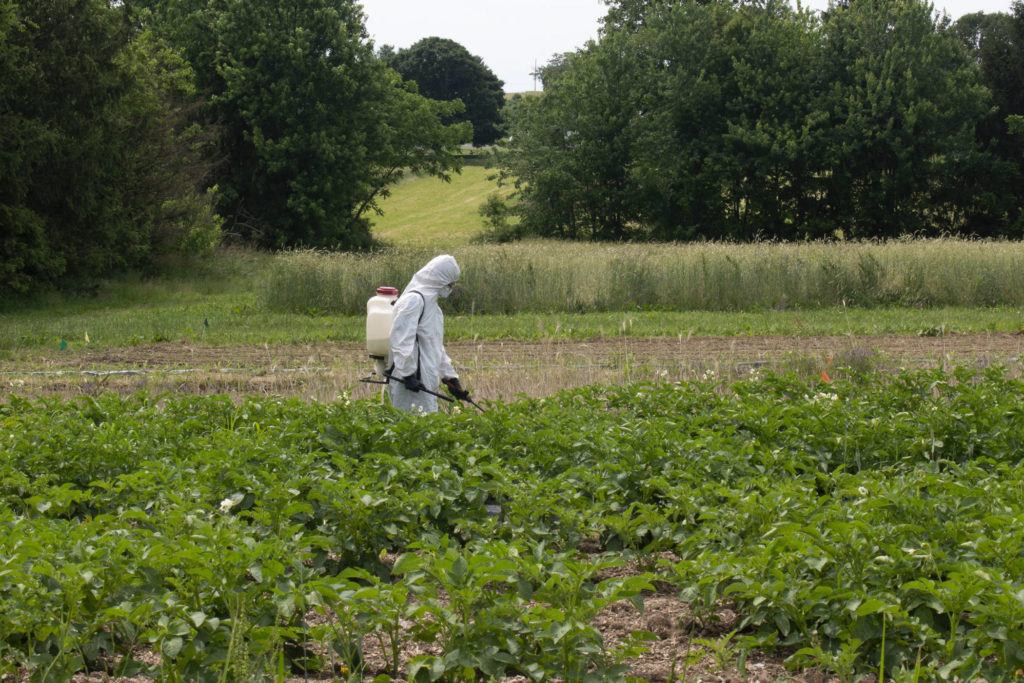Short answer: Yes!
When walking through the grocery store, consumers are bombarded by dozens of labels claiming “100% natural,” “all-natural,” “organic,” and “non-GMO,” to name a few. Without a clear-cut definition of “natural” when it comes to food, it is easy to assume that natural and organic food are more-or-less the same. This is simply not the case.
What does “natural” really mean?
The official Food and Drug Administration (FDA) policy for the natural label states that “the agency has not objected to the use of the term if the food does not contain added color, artificial flavors, or synthetic substances.” The U.S. Department of Agriculture (USDA) does not regulate the use of the natural label for crops. Because of this, consumers are left to make their own hasty conclusions as to what goes into their “natural” food products.
In December of 2018, FrameWorks Institute published a research report titled “The Landscape of Public Thinking about Farming,” exploring the differences between expert and public understandings of agriculture. In the course of this research, FrameWorks Institute interviewed members of the public to determine different assumptions and patterns of reasoning surrounding farming. Many participants in this study described “natural” food as being untouched by human beings, pure and healthy, free of human-made chemical substances, and non-GMO.
In contrast to the public’s understanding, food claiming to be “natural” can be heavily influenced by human activities. According to the American Society for Nutrition, any “foods containing natural flavors, sweeteners, or other plant-derived substances can be labeled natural” regardless if it is laden with pesticides or not. By law, organic foods cannot be grown with pesticides, but there are no laws in place for “natural.”

Also, food with genetically engineered ingredients and highly processed high fructose corn syrup can be labeled as natural. With that being said, in the same report, the public thought “genetically modified crops … are seen not only as unhealthy to humans and the natural environment, but also as morally questionable.” With a “natural” label, there is no guarantee that the produce is non-GMO, and yet, the same people who dislike GMOs buy “all-natural” food.
As for meat, the USDA regulates the natural label; natural meat, poultry, and eggs contain no artificial ingredients or added color and is only minimally processed, according to the USDA. However, the USDA does not require that meat labelled “natural” be hormone and antibiotic-free.
Organic: the real deal
In contrast to foods claiming to be “natural,” the USDA and FDA heavily regulate the foods that get the USDA Certified Organic label. Because of this, there are a lot of hoops that need to be jumped through in order to get that “organic” label. Land must be free of all prohibited substances for at least 3 years before crops can be certified organic, and then farmers still need to undergo regular inspections and audits. Buying organic guarantees that the food you are eating contains no toxic pesticides or chemicals, no synthetic growth hormones or antibiotics, no GMOs, no artificial additives or preservatives, and is grown/raised using organic farming methods. Organic is always natural and non-GMO, but the opposite cannot be said.
It is understandable to be misinformed or confused by this information; it is not actively advertised. We as consumers assume we can trust the people selling our food to us. Withholding information is just as harmful as lying. However, putting the “organic” label on a product isn’t just slapping a word on the packaging with no accountability; it is a promise that what you are eating has been produced without synthetic chemicals or genetic modification.

The public knows, too, that organic is good for them. The report states that “people think of organic and locally grown produce as purer—as healthier and, implicitly, morally preferable because it does not pervert nature.” Organics make people feel assured that they are not introducing harmful chemicals into their bodies or environment.
The truth is that the organic label lets the consumer know that the food they’re ingesting is certified and inspected to ensure regulations prohibiting pesticides, GMOs, and antibiotics were followed. Unless a stricter definition and a set of regulations for “natural” is put in place, consumers trying to make informed decisions should be wary of the “natural” food label and choose organic foods.
Read the full report below.

